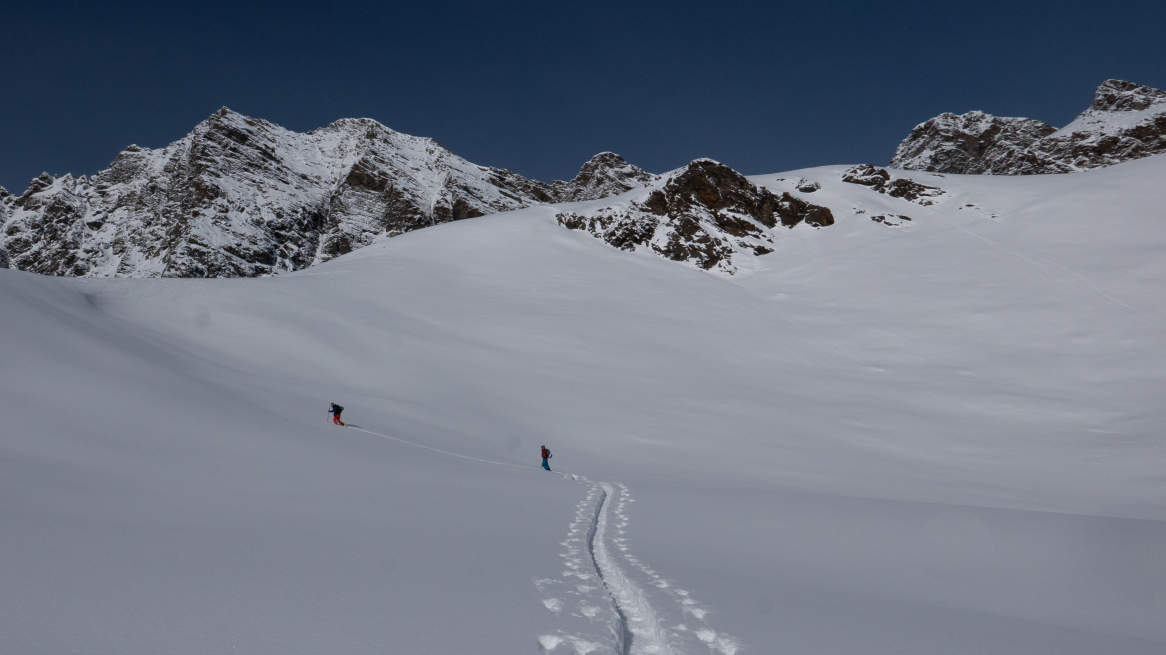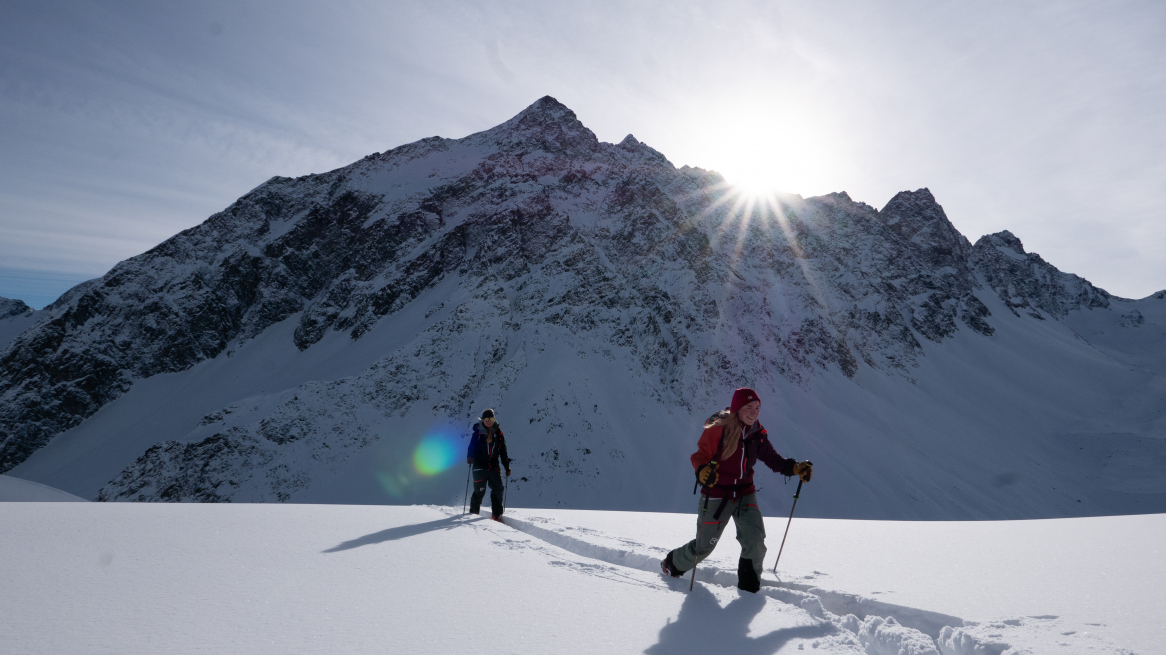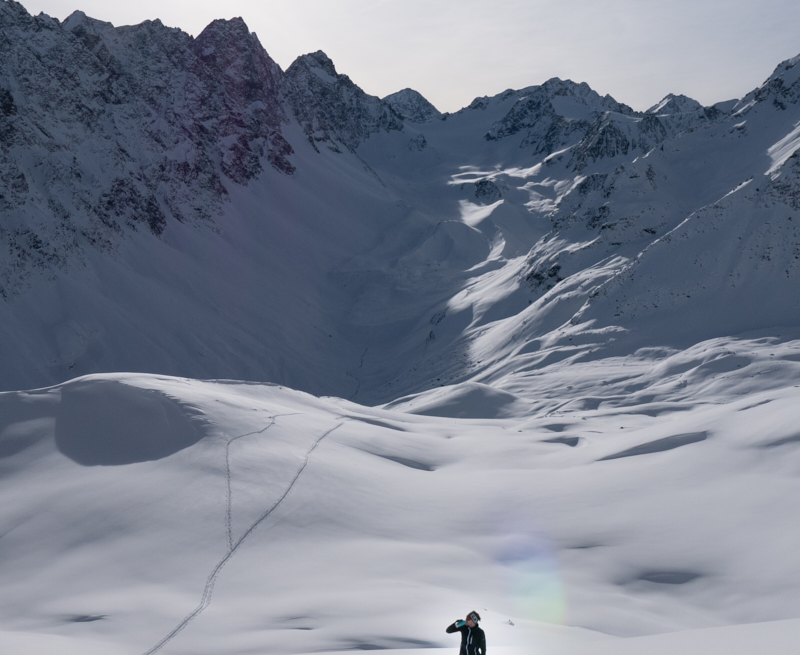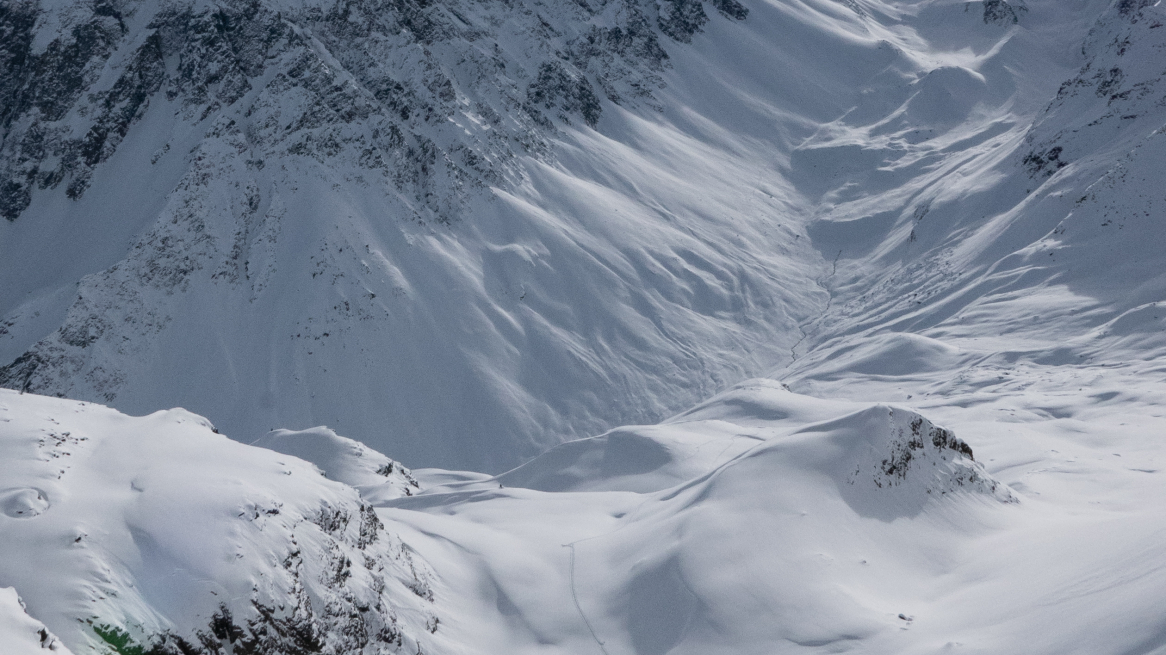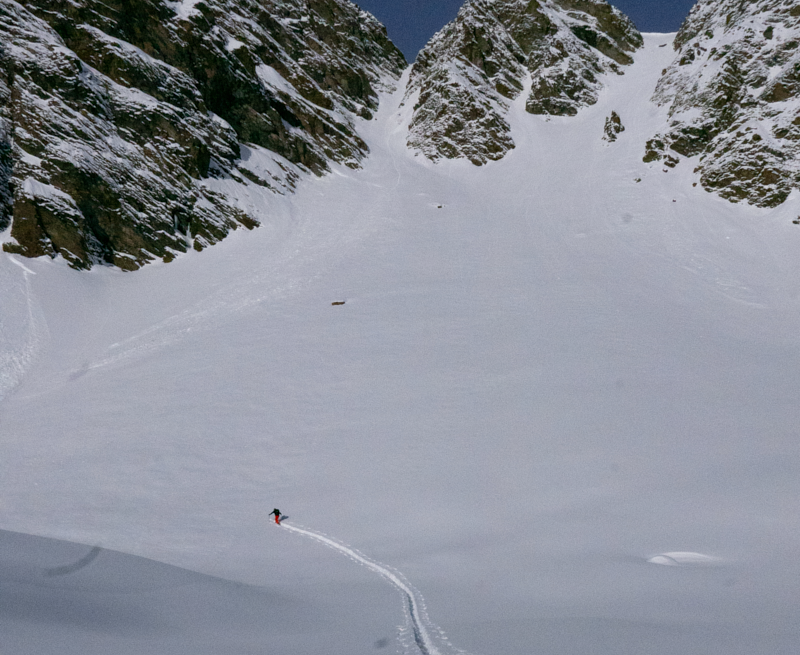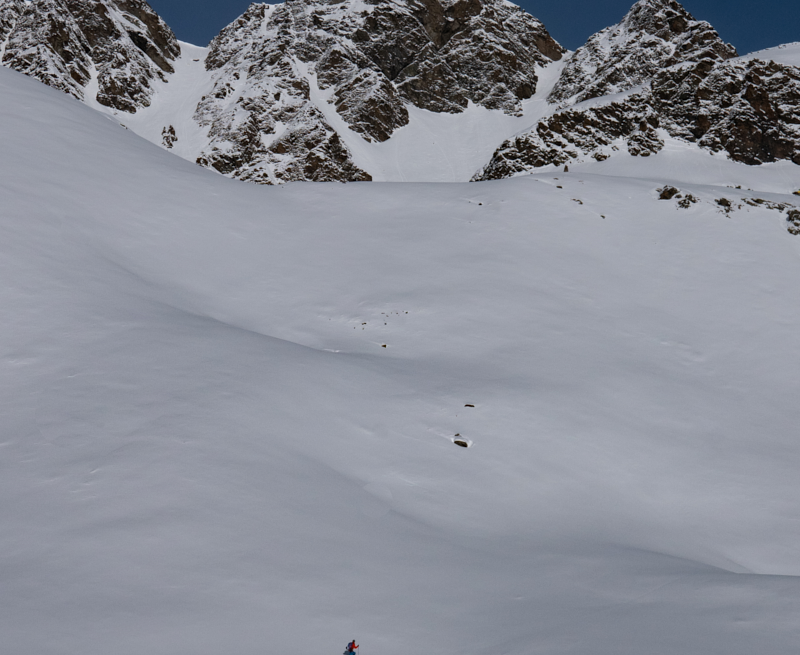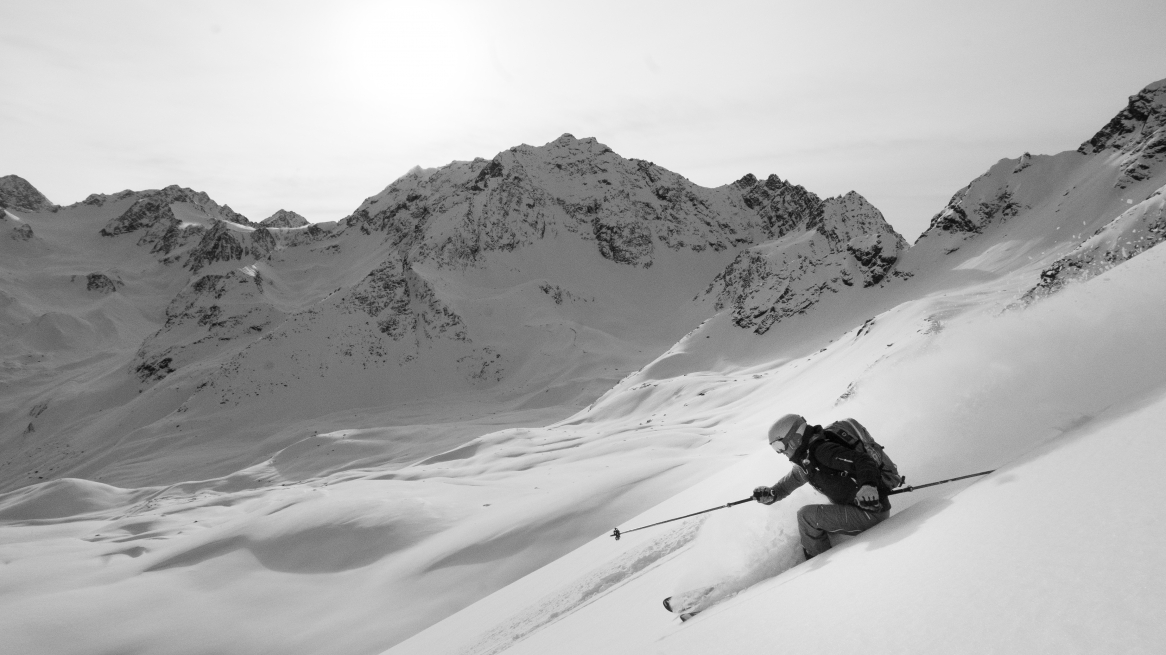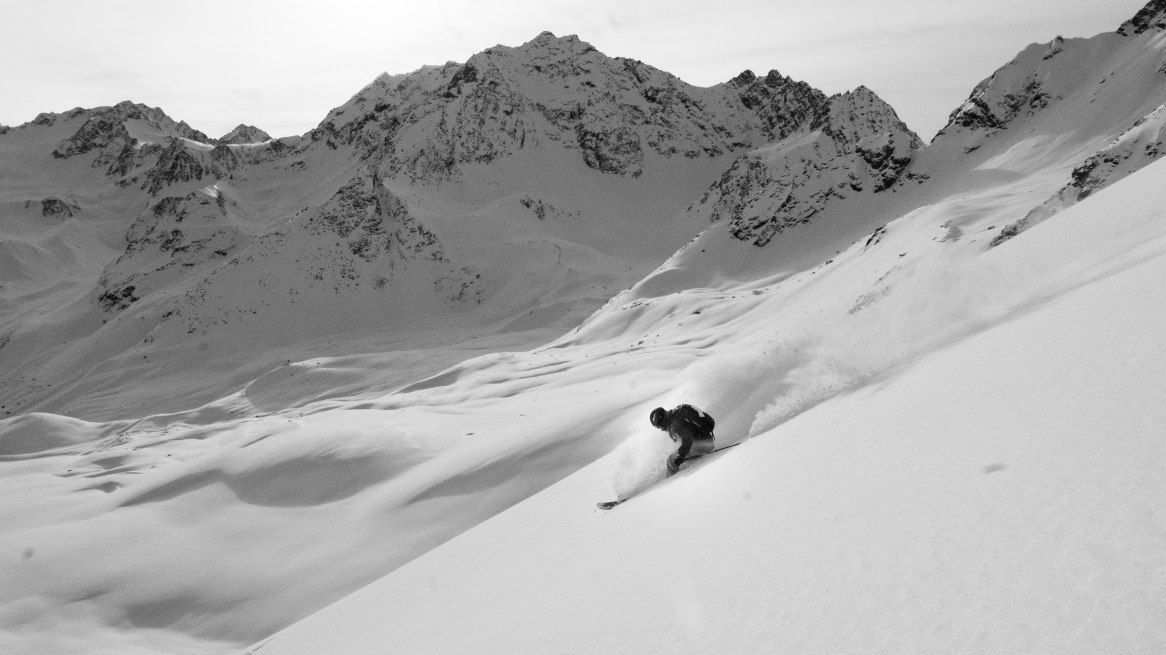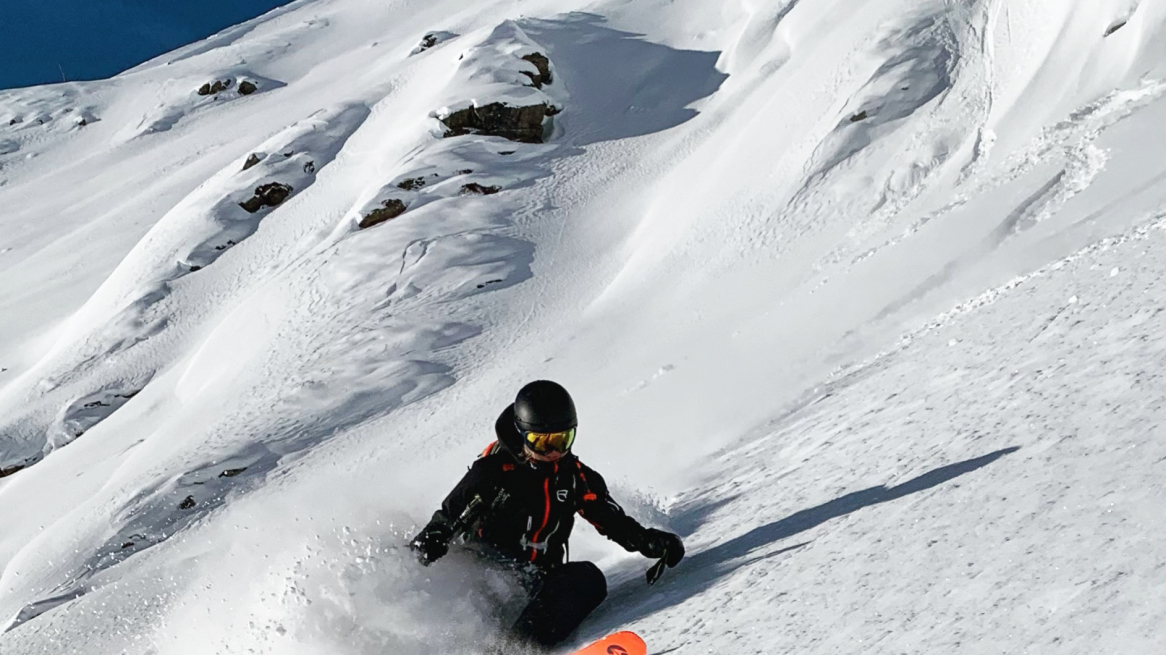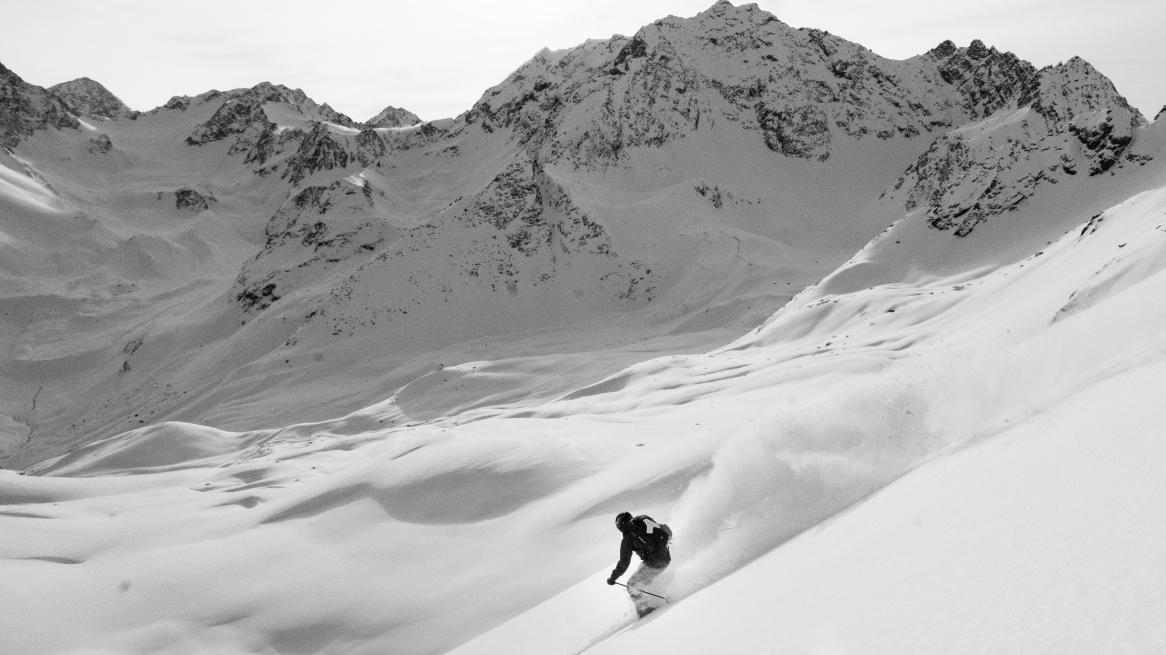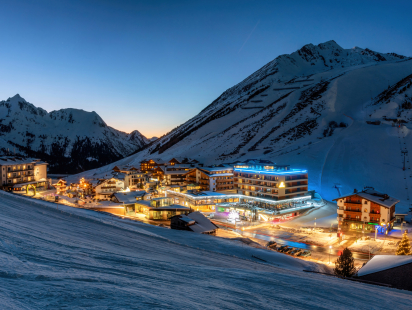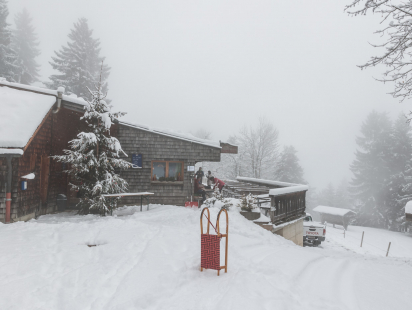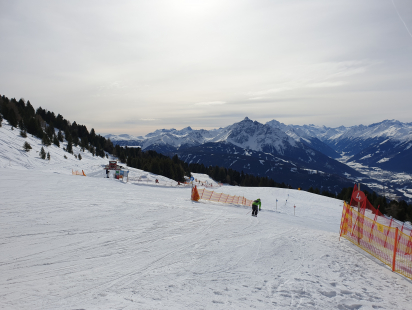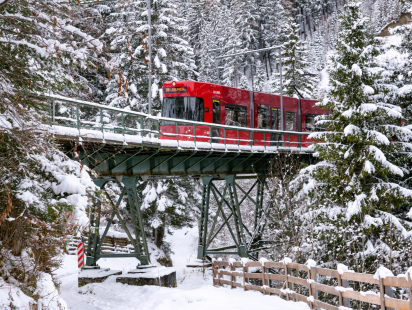You have already covered a few meters of altitude on ski slopes? You have solid skiing skills and have already gained off-piste experience near ski resorts? You are ready to deal with alpine dangers and avalanche awareness? And, you already have a touring partner who is just as motivated? Then you're (almost) ready to go - on a ski tour in the beautiful snow-white mountains of the Alps!
KNOW YOUR EQUIPMENT: HOW TO HANDLE SAFETY EQUIPMENT IN CASE OF EMERGENCY
You may have already noticed: Ski touring is a pretty gear-intensive sport that could not only push your storage space in your home, but also your bank account to the limits of its capacity. As a piste touring skier, you're bound to already have most of your gear at home like ski touring skis + bindings + skins, touring boots, poles, helmet + goggles and outfit.
For tours in open terrain, the safety equipment belongs in every backpack for every tour: avalanche transceiver (LVS), probe, shovel and possibly an airbag backpack. Important: Buying alone is not enough - you should be familiar with your equipment and be able to handle it even in extremely stressful situations. Only one thing helps: practice! Especially in Tyrol there are some institutions that even offer avalanche camps free of charge, for example SAAC or Snow-How and the Austrian Alpine Club. If you are a group of friends, you can also book a trained ski touring guide who will do avalanche training with you and answer any questions you may have on the subject.
Once you know what happens in an avalanche accident: It's best to regularly grab one of your touring partners and repeat the avalanche beacon search on your own, for example in a safe meadow. Your partner buries a backpack with an avalanche transceiver inside (in transmit mode) in the snow and you have to find it as quickly as possible. In the event of a burial, every second counts and can make the difference between life and death.
BE AWARE OF THE RISK - READ AND UNDERSTAND THE AVALANCHE SITUATION REPORT
As soon as you go ski touring outside the secured ski area, you must be aware of the prevailing alpine dangers. There is hardly a winter in the Alps in which there is not a periodically extremely high avalanche danger. And even in supposedly good conditions there is never 100% transparency on the mountain. The snowpack and its structure are very complex and its stability - and thus the safety for the winter sportsman - depends on many factors.
Of course, not everyone can be a snow and avalanche expert - however, every ski tourer should acquire a certain know-how together with the equipment in order to ensure their own safety and that of their touring partner. Fortunately, in Tyrol we have a large density of experts and institutions that play a leading role in all aspects of knowledge and research in avalanche science. For the general public, there are always events, courses and, at the moment, lots of online seminars taking place throughout the Tyrol to expand or refresh knowledge. A constant and smooth flow of information on current conditions relating to avalanche danger cannot be taken for granted and Tyrol is definitely a pioneer in this area. Take advantage of this brilliant offer!
As soon as you know the danger patterns and signs, get the information on the avalanche situation report before every tour and plan your tour on the basis of this. Ideally, you will also stay up to date during your non-touring (working) time, so that over the years you will get a better feeling for the interrelationships between snowpack structure and the influencing factors such as wind, temperature or fresh snow.
KNOW YOUR LIMITS - TAILOR TOUR PLANNING TO YOUR ABILITY AND EXPERIENCE
Tour planning can be nerve-wracking and take up many hours of your free time. Especially if your touring repertoire is still small and you don't yet know many suitable routes for the corresponding conditions, it's no use spending more or less time on planning. Never simply follow already existing tracks without knowing where they lead to! Take a close look at your desired tour on a map (for example here: alpenvereinaktiv.com or also in 3D here: fatmap.com) and get the most important information: Altitude/kilometers, exposure, slope, etc. Start small and easy and according to your skills and touring experience.
Ski touring skills include: your uphill endurance and strength, your downhill skiing skills and your knowledge of off-piste hazards. Even if you already have good endurance from piste tours or hikes, ask yourself honestly whether you can ski safely, without falling and relatively quickly even in poor snow conditions and in steeper terrain! Because on most ski touring days, the snow will not be fluffy and light from top to bottom. Snow is often variable in consistency, and it's not uncommon for wind or sun to give it the (ever-popular) slush cap. If you fall, this puts an enormous additional load on the snowpack and the likelihood of disturbing a weak layer is even greater. In general, uphill altitude should not push you to your physical limits to the point that you have no energy left for the descent. You should be able to ski longer sections without stopping and then wait for your tour partners at pre-planned, safe assembly points.
MAKE YOUR OWN DECISIONS - BE A DECISION MAKER, NOT A FOLLOWER
Your ski touring partners are already half pros - at least they already know more than you? In the group there is a regular exchange among each other and the risks are openly discussed and weighed? That's great! You can learn a lot from such discussions. Your goal should be to not just be a listener, follower and approver, but to be able to contribute to the decision-making process yourself. This requires knowledge and experience. This does not mean that you always have to be right - especially on the mountain, right or wrong decisions are often very close together. What is important is that you can independently weigh the pros and cons and express your concerns or approval for an action.
If, especially on your first ski tours, you prefer to relinquish the power of decision and relax and follow the tracks of an expert, then it is best to book a ski tour guide. Not only will the likelihood of powder snow increase, you can also ask him/her any questions that come to mind and spend a relaxed and adventurous day on the mountain.
YOUR GUT-FEELING MATTERS: LISTEN TO YOUR GUT FEELING - AND STAY FLEXIBLE
The summit is within reach. However, you suspect a pack of drifting snow on the last slope, which could be your undoing. This scenario is the rule rather than the exception and turning around on tour is part of the routine for experienced ski tourers. The mountaineer does not always find this approach easy as he/she is hard-wired to 'bite through': Despite the early morning demotivation, tired legs or the icy cold wind, you (usually) keep going until you reach the summit. In ski touring in particular and mountain sports in general, however, the motto is: better to turn around more often and arrive healthy in the valley than to reach the goal by hook or by crook.
And: Fortunately, the mountain is still there! If you simply have a queasy feeling, be it on a slope traverse or because the snow cover seems a bit strange to you today - don't hesitate to express your feeling in the group! Then you can weigh up together whether there is any truth to the doubt or not. Don't be tempted by group dynamics if you don't feel comfortable.
MAKE THE CALL: REPORT AVALANCHE RELEASES
The worst-case scenario has occurred: You observe an avalanche triggering or are even involved yourself. But fortunately nothing happened and nobody was buried/injured. Important: Every avalanche must be reported to a control center! In Tyrol we are in the fortunate position of having a top functioning mountain rescue system and therefore every avalanche where the involvement of a person cannot be definitively ruled out, leads to the emergency chain being set in motion. These emergency personnel are urgently needed on accident-prone days and can make the difference between life and death at another location. No one who reports a negative avalanche has to fear any consequences, but saves the emergency services a lot of time, nerves and money.
140 is the number for alpine emergency calls of the Mountain Rescue Tyrol.
112 is the European emergency call and also works without a network.
After so much seriousness, again very well summarized by Harry G:
Photos ©Lena Koller, Valentin Possert
Rate this article
Show me the location on the map
L - ives life to its limits,
E - xperiences most of her greatest moments on the mountain,
N - ever says no to good coffee and
A - dores her mum's homemade sauerkraut
Similar articles
Who has experienced them, these clear, cold winter nights in the high mountains? Maybe even under a…
The toboggan run from the Rumer Alm is one of my absolute favorite toboggan runs. At just…
When I came to Austria at the age of 16, winter sports were still pretty exotic for…
Snow-covered forests, exercise in the fresh air, enjoying the winter... I am regularly drawn to go outside,…


